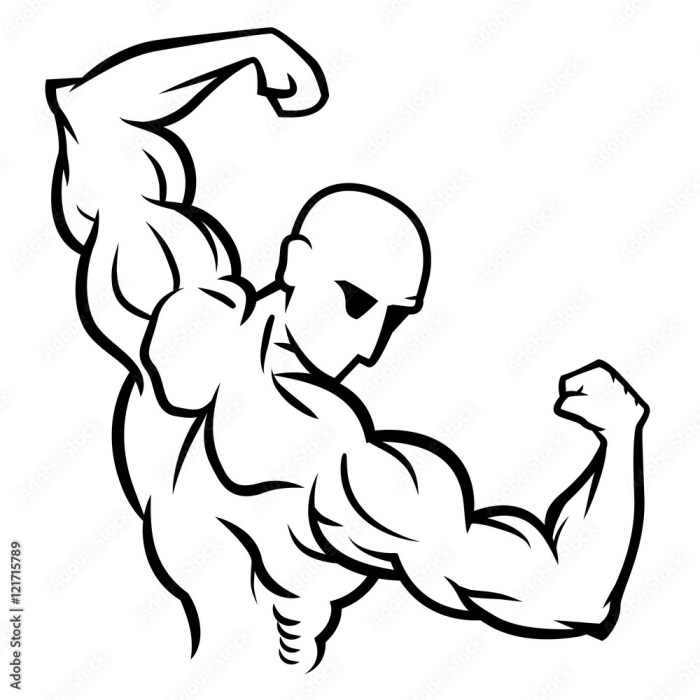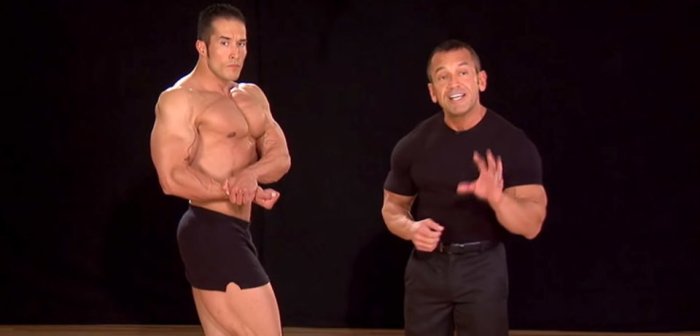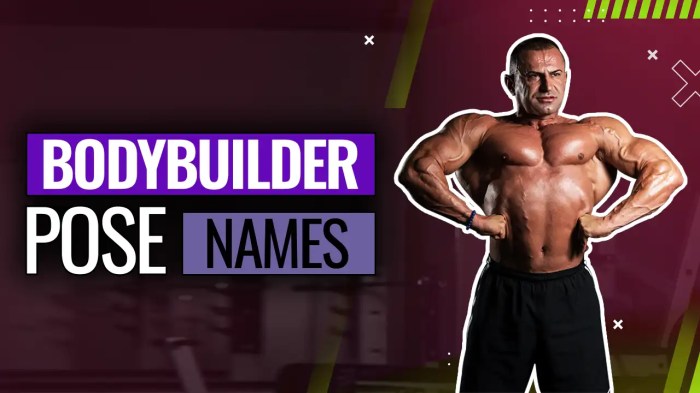Ever dreamed of drawing a superhero with a physique that could rival a Greek god? Or maybe you’re looking to capture the power and dynamism of a champion bodybuilder? “350 Poses for Artists: Mastering Muscled Bodies” is your ultimate guide to unlocking the secrets of the human form, especially when it comes to those sculpted, powerful figures that make hearts race and imaginations soar.
This comprehensive resource delves into the anatomy of muscles, breaking down the complex interplay of each group and how they work together to create movement and pose. From understanding the origins and insertions of muscles to mastering the art of foreshortening, you’ll gain a deeper understanding of how to translate the human body onto the page with unparalleled accuracy and dynamism.
Mastering the Human Form

To truly capture the essence of the human form, artists must delve into the intricacies of its musculature. Understanding the anatomy of muscles, their structure, function, and placement, is key to rendering realistic and dynamic poses. This knowledge empowers artists to depict movement, tension, and the subtle nuances that bring life to their creations.
Fundamental Muscle Groups
The human body is a complex symphony of muscle groups, each playing a crucial role in movement and posture. Understanding the major muscle groups, their structure, and function provides a foundation for creating believable and anatomically accurate artwork.
- Head and Neck:The muscles of the head and neck control facial expressions, chewing, and head movement. Key muscles include the masseter (chewing), temporalis (chewing), sternocleidomastoid (neck flexion), and trapezius (shoulder elevation and neck extension).
- Torso:The torso muscles are responsible for core stability, breathing, and movement of the arms and legs. Major muscle groups include the pectoralis major (chest), latissimus dorsi (back), rectus abdominis (abdomen), and obliques (side torso).
- Arms:The muscles of the arms enable movement of the hands and forearms, including flexion, extension, and rotation. Key muscle groups include the biceps brachii (flexion), triceps brachii (extension), and brachioradialis (forearm flexion).
- Legs:The leg muscles power walking, running, jumping, and other movements. Major muscle groups include the quadriceps femoris (knee extension), hamstrings (knee flexion), gluteus maximus (hip extension), and gastrocnemius (calf muscle).
Muscle Origins and Insertions
Muscles are attached to bones via tendons, with one end connected to the origin and the other to the insertion. The origin remains relatively fixed, while the insertion moves during muscle contraction. Understanding the origins and insertions of muscles is essential for understanding how they create movement.
For example,the biceps brachii muscle originates on the scapula (shoulder blade) and inserts on the radius (forearm bone). When the biceps contracts, it pulls the radius towards the scapula, causing flexion of the elbow joint.
Interplay of Muscle Groups
Muscles rarely work in isolation. Dynamic poses often involve the coordinated action of multiple muscle groups.
For instance,a powerful punch requires the coordinated action of the shoulder muscles (deltoids, rotator cuff), arm muscles (biceps, triceps), and core muscles (abdominals, obliques) to generate force and stability.
Pumping iron and sketching out epic superhero poses? You need the ultimate guide to muscled bodies! “350 Poses for Artists” is packed with detailed anatomical drawings, from the classic bodybuilder to the dynamic superhero. Want to learn the secrets to nailing those ripped physiques?
Download And Listen Here to get your hands on this must-have resource and level up your art game! From sculpted abs to powerful stances, this collection will have you drawing incredible characters in no time.
Muscle Variations
Individuals exhibit variations in muscle size, shape, and definition. These variations influence body proportions and aesthetics, creating unique visual characteristics.
For example,some individuals may have naturally larger or more defined biceps muscles, while others may have more prominent calf muscles. These variations can be exaggerated or minimized in artistic depictions to enhance the desired aesthetic.
The Art of Posing

Posing is the foundation of conveying character, emotion, and story through visual art. It’s about understanding the human form, its mechanics, and how it moves, not just as a collection of muscles but as a living, breathing entity. The art of posing transcends simple anatomy; it delves into the subtle nuances of body language, the unspoken narrative that unfolds in every curve and gesture.
Balance and Weight Distribution
Understanding the principles of balance and weight distribution is essential for creating stable and believable poses. A pose that defies gravity or lacks a sense of equilibrium will immediately appear unrealistic. Imagine a figure standing with one leg slightly bent and the other straight.
The bent leg acts as the support leg, bearing the majority of the weight. The straight leg provides balance and a sense of movement. The weight distribution should be evident in the figure’s posture, with the shoulders aligned over the hips and the head balanced atop the spine.
Perspective and Foreshortening
Perspective and foreshortening are key to depicting the human body in different angles and positions. Perspective refers to the way objects appear smaller and less detailed as they recede into the distance. Foreshortening, on the other hand, deals with the distortion of objects when they are viewed at an angle.
For example, when drawing a figure facing the viewer with one arm extended, the arm closest to the viewer will appear shorter and wider than the arm furthest away. This distortion creates a sense of depth and realism.
Posing Techniques for Storytelling
Posing is a powerful tool for conveying emotions, actions, and storytelling through body language.
- Open and Closed Postures:Open postures, with arms and legs extended, suggest openness, confidence, and receptiveness. Closed postures, with arms and legs crossed, convey a sense of defensiveness, introversion, or guardedness.
- Mirroring and Matching:When two figures mirror each other’s postures, it suggests connection, agreement, or empathy. Conversely, contrasting postures can highlight conflict, disagreement, or tension.
- Leading Lines:The direction of the figure’s limbs and gaze can create leading lines that guide the viewer’s eye through the composition. This can be used to emphasize specific elements, create a sense of movement, or direct the viewer’s attention to a focal point.
Classic Poses in Art History
Throughout art history, certain poses have been repeatedly used and adapted, demonstrating their enduring impact on artistic expression.
“The Contrapposto Pose”
Yo, wanna draw some ripped bods like a pro? “350 Poses for Artists Muscled Bodies Anatomy of the Musculature Drawings of bodybuilders and superheroes in different postures references to draw” is your jam. But if you’re feeling a little more chill, check out COLOR BY NUMBERS BOOK FOR KIDS AGES 8-12 Over 45+ Large Print Birds Flowers Animals and Pretty Patterns Color by Number Activity Coloring Books (Black Background) for some super relaxing coloring fun.
Then, you can go back to those muscles, bro!
This classic pose, popularized during the Renaissance, features a figure standing with one leg relaxed and the other bearing the weight, creating a subtle S-curve in the body. This pose, often seen in sculptures like Michelangelo’s “David,” conveys a sense of balance, dynamism, and naturalism.
“The Vitruvian Man”
Leonardo da Vinci’s iconic drawing, “Vitruvian Man,” illustrates the ideal human proportions as described by the Roman architect Vitruvius. This pose, with arms and legs extended, has become a symbol of human anatomy and the harmonious relationship between the body and the universe.
Drawing Inspiration

Sculpting the human form with a pencil or brush is a journey of understanding anatomy, proportion, and the beauty of the human body. The study of muscled bodies, from the sculpted physiques of bodybuilders to the superhuman forms of comic book heroes, offers a rich source of inspiration for artists.
Bodybuilder Anatomy
Bodybuilders are the epitome of physical development, their bodies honed through years of intense training and a strict regimen. Their anatomy is characterized by a level of muscularity that is both aesthetically pleasing and a testament to the power of human potential.
Their bodies are sculpted with a level of detail that reveals the intricate network of muscles beneath the skin, highlighting the precise definition of each muscle group.
“Bodybuilders are living sculptures, their bodies a testament to the power of human potential.”
Artists can gain valuable insights into the human form by studying the anatomy of bodybuilders. By observing their poses, the interplay of muscles, and the balance of proportions, artists can develop a deeper understanding of the structure and movement of the human body.
Exaggerated Musculature in Superheroes
Superheroes are often depicted with exaggerated musculature, a stylistic choice that serves to visually represent their extraordinary strength and power. This exaggeration goes beyond the typical human physique, emphasizing the power and heroism inherent in these characters.
“Superheroes are often depicted with exaggerated musculature, a stylistic choice that visually represents their extraordinary strength and power.”
The exaggerated musculature of superheroes is a key element of their visual identity. This heightened physicality is not simply about aesthetics; it is a powerful visual metaphor for the hero’s abilities.
Real-World Athletes and Performers
The human form is a canvas of incredible athleticism and artistry, and artists can draw inspiration from the movements and postures of real-world athletes and performers. Whether it’s the graceful leaps of a dancer, the explosive power of a sprinter, or the strategic movements of a martial artist, these individuals embody the human form at its peak.
“Real-world athletes and performers embody the human form at its peak.”
Artists can learn from the dynamic poses, fluid movements, and expressions of these individuals, incorporating their athleticism into their own artistic representations.
Diverse Artistic Styles
The depiction of muscled figures is a diverse field, encompassing a wide range of artistic styles and techniques. Artists can choose to represent these figures with realism, capturing every detail of the anatomy and musculature.
“The depiction of muscled figures is a diverse field, encompassing a wide range of artistic styles and techniques.”
Alternatively, artists can opt for stylized depictions, using exaggerated proportions, dynamic lines, and bold colors to convey the power and dynamism of the human form.
Book Review: A Comprehensive Guide to 350 Poses
![]()
“350 Poses for Artists: Muscled Bodies, Anatomy of the Musculature, Drawings of Bodybuilders and Superheroes in Different Postures” is a treasure trove of reference material for artists looking to master the art of drawing dynamic and anatomically accurate figures, especially those with a focus on muscular physiques.
The book’s strength lies in its extensive collection of poses, each meticulously illustrated and accompanied by clear explanations of the underlying anatomy.
Want to draw ripped superheroes and bodybuilders? 350 Poses for Artists is your jam! It’s got all the muscle anatomy you need, from flexing biceps to dynamic poses. But hey, maybe you’re feeling a little more cuddly. Check out How to Draw Coolest Things Cute Animals Step-by-step Fun and Easy Sketching Guide for kids.
Learn to Draw Dogs Cats Lions Elephants Dolphins and more! for some adorable animal drawing inspiration. Once you’ve mastered those furry friends, you can go back to those superhero muscles with a whole new appreciation for the power of a good drawing!
Content and Organization
The book is organized into sections, each focusing on a specific aspect of the human form. It begins with a thorough introduction to anatomy, covering the major muscle groups and their functions. This section is particularly valuable for artists who are new to figure drawing and need a solid foundation in anatomical knowledge.
Following this, the book delves into the various poses, ranging from simple standing positions to complex action poses. Each pose is presented with multiple angles, allowing artists to study the figure from various perspectives. The book also includes detailed breakdowns of the musculature in each pose, highlighting the interplay of muscles and how they contribute to the overall form.
Target Audience and Approach to Posing
The book is primarily geared towards artists who are interested in drawing realistic figures, particularly those with muscular builds. It’s ideal for artists working in various mediums, including traditional drawing, digital painting, and sculpture. The book’s approach to posing is both practical and insightful.
So, you’re looking to level up your art game with some epic muscled figures, huh? Whether you’re drawing bodybuilders or superheroes, nailing those poses is key. And that’s where a resource like Soil Science For Regenerative Agriculture A Comprehensive Guide To Living Soil No-Till Gardening Composting And Natural Farming – Complete With A Step-By-Step Action Plan To Quickly Grow Soil comes in handy.
Just kidding! But seriously, with a good understanding of the human form, you’ll be able to draw those muscles with the power of a thousand suns!
It emphasizes understanding the underlying anatomy and how it affects the figure’s movement and posture. Instead of simply providing a collection of poses, the book encourages artists to think critically about the mechanics of the human body and to apply this knowledge to their own drawings.
Strengths and Weaknesses
The book’s strengths lie in its comprehensiveness, clarity, and practical value. The extensive collection of poses provides a wealth of reference material, covering a wide range of movements and postures. The illustrations are clear and detailed, making it easy to understand the anatomy and how it affects the figure’s form.
The book’s explanations are concise and informative, offering valuable insights into the principles of figure drawing. However, the book could benefit from more in-depth explanations of the anatomy and how it relates to specific poses. While the illustrations are helpful, they could be enhanced with more detailed annotations and diagrams highlighting key muscle groups and their interactions.
Comparison to Other Resources
“350 Poses for Artists” stands out from other resources on figure drawing and anatomy by offering a focused approach to drawing muscular figures. While other books may cover anatomy and posing, they often lack the depth and specificity of this book.
This book’s focus on bodybuilders and superheroes makes it particularly valuable for artists working in genres that require a strong understanding of musculature.
Recommendation
“350 Poses for Artists” is a highly recommended resource for artists of all levels who are looking to improve their understanding of the human form, especially those interested in drawing muscular figures. The book’s extensive collection of poses, clear illustrations, and informative explanations make it an invaluable tool for artists seeking to elevate their figure drawing skills.
Final Conclusion
![]()
Whether you’re a seasoned artist looking to refine your skills or a budding illustrator eager to take on new challenges, “350 Poses for Artists: Mastering Muscled Bodies” offers a wealth of knowledge and inspiration. With its insightful explanations, practical exercises, and stunning visual references, this book empowers you to create captivating figures that radiate strength, grace, and dynamism.
So, get ready to unleash your artistic potential and bring those muscular masterpieces to life!
FAQ Corner
What types of poses are included in the book?
The book features a wide variety of poses, from classic anatomical studies to dynamic action poses, all designed to help artists understand the nuances of muscular movement and form.
Is the book suitable for beginners?
While the book delves into detailed anatomical information, it is written in a clear and accessible style, making it suitable for both beginners and experienced artists.
Are there any digital resources available to supplement the book?
Some versions of the book may include digital resources such as downloadable images or access to online tutorials.
What makes this book different from other anatomy resources?
The book focuses specifically on muscular anatomy and its application to drawing figures with a powerful and athletic physique. It also includes a vast collection of poses, making it a comprehensive resource for artists interested in this niche.
